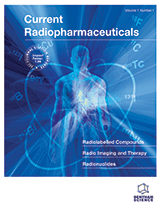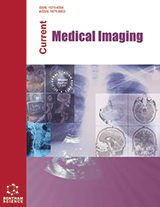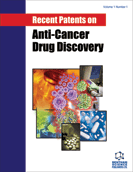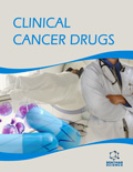Abstract
Introduction: In myocardial perfusion imaging, reducing the number of photons in images of obese patients causes poor image quality. To solve this problem, we need to inject the tracer according to the patients' weight. Therefore, this study aimed to investigate the relationship between myocardial photon counts with patients' weight, BMI, and gender.
Materials and Methods: A total of 129 patients underwent myocardial perfusion imaging in a twoday
stress-first protocol, but only rest images were included in this study. Multiplication factor  was used to determine the amount of
radiopharmaceutical activity injected into the patients. For evaluating the effect of gender, the photon
counts of 22 female patients were also assessed when the breast tissue was pulled upward
(Breast Up). The total myocardial detector counts in the raw images were calculated from the summation
of 32 projections. A multiple linear regression test was used to simultaneously examine the
effects of weight, BMI, and gender on photon counts.
was used to determine the amount of
radiopharmaceutical activity injected into the patients. For evaluating the effect of gender, the photon
counts of 22 female patients were also assessed when the breast tissue was pulled upward
(Breast Up). The total myocardial detector counts in the raw images were calculated from the summation
of 32 projections. A multiple linear regression test was used to simultaneously examine the
effects of weight, BMI, and gender on photon counts.
Results: There was no significant relationship between photon counts and patients' weight (p=0.129) and BMI (0.406), but gender had significant effects on photon counts, and myocardial detector counts were found to be higher in males (p=0.00). There was a statistically significant difference between the images of Breast Up and Non-Breast Up, and myocardial detector counts were higher in the Breast Up imaging method (p=0.00).
Conclusion: Using the bodyweight formula, the image quality was comparable in obese and lean patients, but myocardial detector counts were lower in females, and this formula needs to be adjusted according to the patient's gender.
Keywords: Myocardial perfusion imaging, SPECT, radiopharmaceutical activity, 99mTc-Sestamibi, coronary artery disease, body weight.
Graphical Abstract
Current Radiopharmaceuticals
Title:Assessment Relation of Myocardial Detector Counts and Administered Activity of 99mTc-SestaMIBI in MPI: The Effects of Body Weight, BMI, and Gender
Volume: 15 Issue: 2
Author(s): Mahdi Mazinani, Mohammad Ali Tajik-Mansoury*, Mahsa Sabour, Majid Jadidi, Milad Peer- Firozjaei and Nader Asadian
Affiliation:
- Department of Medical Physics, Semnan University of Medical Sciences, Semnan, Iran
- Raaheaseman Center of Nuclear Medicine, Semnan University of Medical Science, Semnan, Iran
Keywords: Myocardial perfusion imaging, SPECT, radiopharmaceutical activity, 99mTc-Sestamibi, coronary artery disease, body weight.
Abstract:
Introduction: In myocardial perfusion imaging, reducing the number of photons in images of obese patients causes poor image quality. To solve this problem, we need to inject the tracer according to the patients' weight. Therefore, this study aimed to investigate the relationship between myocardial photon counts with patients' weight, BMI, and gender.
Materials and Methods: A total of 129 patients underwent myocardial perfusion imaging in a twoday
stress-first protocol, but only rest images were included in this study. Multiplication factor  was used to determine the amount of
radiopharmaceutical activity injected into the patients. For evaluating the effect of gender, the photon
counts of 22 female patients were also assessed when the breast tissue was pulled upward
(Breast Up). The total myocardial detector counts in the raw images were calculated from the summation
of 32 projections. A multiple linear regression test was used to simultaneously examine the
effects of weight, BMI, and gender on photon counts.
was used to determine the amount of
radiopharmaceutical activity injected into the patients. For evaluating the effect of gender, the photon
counts of 22 female patients were also assessed when the breast tissue was pulled upward
(Breast Up). The total myocardial detector counts in the raw images were calculated from the summation
of 32 projections. A multiple linear regression test was used to simultaneously examine the
effects of weight, BMI, and gender on photon counts.
Results: There was no significant relationship between photon counts and patients' weight (p=0.129) and BMI (0.406), but gender had significant effects on photon counts, and myocardial detector counts were found to be higher in males (p=0.00). There was a statistically significant difference between the images of Breast Up and Non-Breast Up, and myocardial detector counts were higher in the Breast Up imaging method (p=0.00).
Conclusion: Using the bodyweight formula, the image quality was comparable in obese and lean patients, but myocardial detector counts were lower in females, and this formula needs to be adjusted according to the patient's gender.
Export Options
About this article
Cite this article as:
Mazinani Mahdi, Tajik-Mansoury Ali Mohammad*, Sabour Mahsa , Jadidi Majid , Peer- Firozjaei Milad and Asadian Nader , Assessment Relation of Myocardial Detector Counts and Administered Activity of 99mTc-SestaMIBI in MPI: The Effects of Body Weight, BMI, and Gender, Current Radiopharmaceuticals 2022; 15 (2) . https://dx.doi.org/10.2174/1874471014666210426112933
| DOI https://dx.doi.org/10.2174/1874471014666210426112933 |
Print ISSN 1874-4710 |
| Publisher Name Bentham Science Publisher |
Online ISSN 1874-4729 |
 20
20
- Author Guidelines
- Bentham Author Support Services (BASS)
- Graphical Abstracts
- Fabricating and Stating False Information
- Research Misconduct
- Post Publication Discussions and Corrections
- Publishing Ethics and Rectitude
- Increase Visibility of Your Article
- Archiving Policies
- Peer Review Workflow
- Order Your Article Before Print
- Promote Your Article
- Manuscript Transfer Facility
- Editorial Policies
- Allegations from Whistleblowers
Related Articles
-
Realizing the Potential of Health-Promoting Rosehips from Dogroses (Rosa sect. Caninae)
Current Bioactive Compounds Reproductive and Endocrine Effects of p-Nonylphenol and Methoxychlor: A Review
Immunology, Endocrine & Metabolic Agents in Medicinal Chemistry (Discontinued) Recombinant Protein Based Therapeutics for IPF
Inflammation & Allergy - Drug Targets (Discontinued) The Pursuit of Differentiated Ligands for the Glucocorticoid Receptor
Current Topics in Medicinal Chemistry The Role of Circulating Endothelial Progenitor Cells in Tumor Angiogenesis
Current Stem Cell Research & Therapy Cytochromes P450 and Skin Cancer: Role of Local Endocrine Pathways
Anti-Cancer Agents in Medicinal Chemistry Muscarinic Receptors as Targets for Metronomic Therapy in Breast Cancer
Current Pharmaceutical Design Meditation: A Review of its Use in Western Medicine and, in Particular, its Role in the Management of Sexual Dysfunction
Current Psychiatry Reviews Transporters at CNS Barrier Sites: Obstacles or Opportunities for Drug Delivery?
Current Pharmaceutical Design Prostate Cancer Gene Regulatory Network Inferred from RNA-Seq Data
Current Genomics The Quinoline Imidoselenocarbamate EI201 Blocks the AKT/mTOR Pathway and Targets Cancer Stem Cells Leading to a Strong Antitumor Activity
Current Medicinal Chemistry Disorders of Innate Immunity in Human ageing and effects of Nutraceutical Administration
Endocrine, Metabolic & Immune Disorders - Drug Targets Anti-Proliferative Compounds for the Prevention of Restenosis: Anti-Restenotic Mechanisms of Paclitaxel Action
Current Pharmaceutical Design Temporal Expression of miRNAs in Laser Capture Microdissected Palate Medial Edge Epithelium from Tgfβ3<sup>-/-</sup> Mouse Fetuses
MicroRNA Phytochemicals from Peanut (<i>Arachis hypogaea</i> L.) Skin Extract with Potential for Pharmacological Activity
Current Bioactive Compounds Prognostic Value and Clinicopathological Differences of Bmi1 in Gastric Cancer: A Meta-analysis
Anti-Cancer Agents in Medicinal Chemistry Current Understanding of Epigenetics Driven Therapeutic Strategies in Colorectal Cancer Management
Endocrine, Metabolic & Immune Disorders - Drug Targets The Role of 18 kDa Mitochondrial Translocator Protein (TSPO) in Programmed Cell Death, and Effects of Steroids on TSPO Expression
Current Molecular Medicine Enzymatic regulation and functional relevance of NOX5
Current Pharmaceutical Design Solid Lipid Nanoparticles and Nanostructured Lipid Carriers: A Review
Current Drug Therapy























